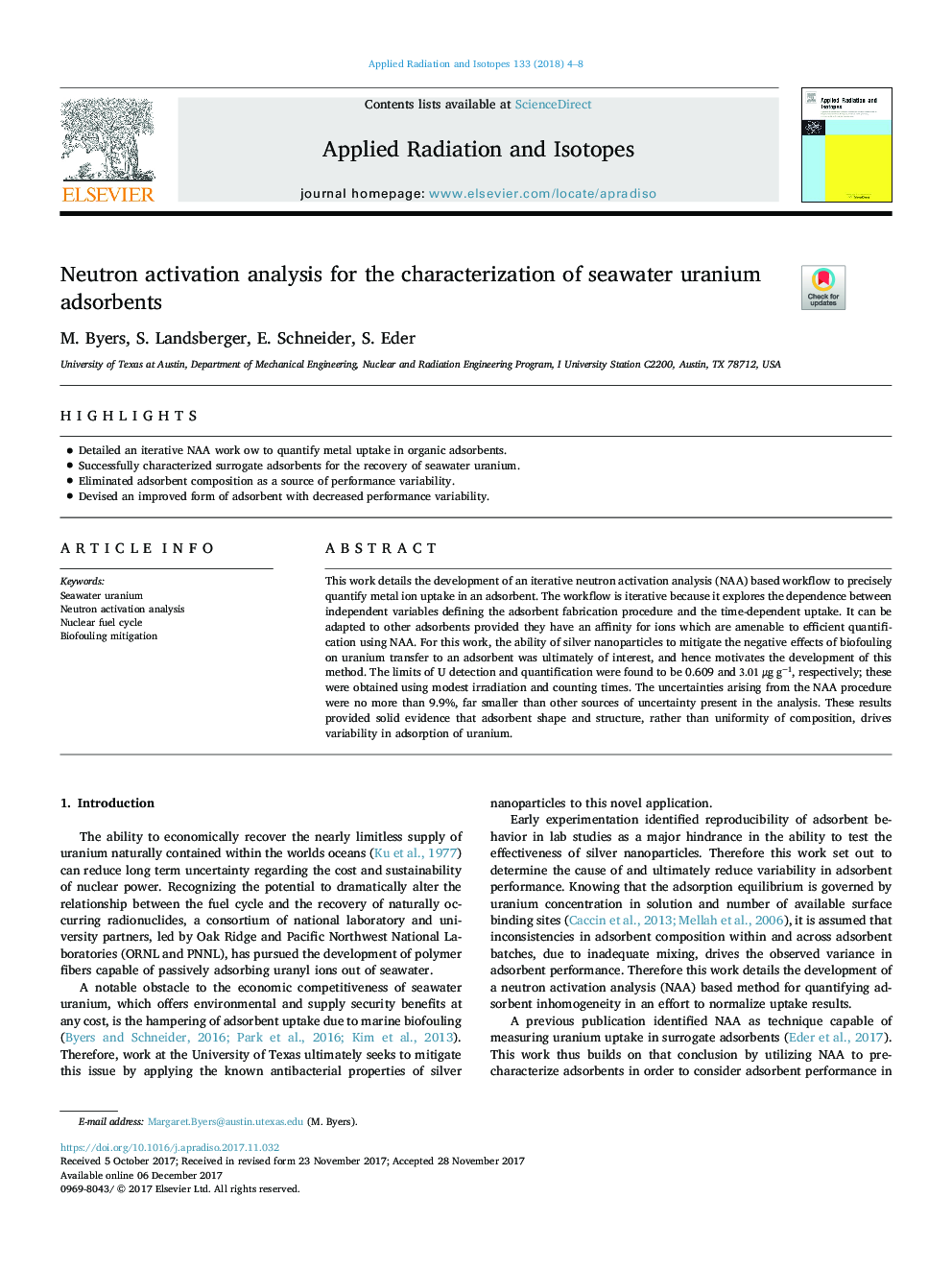| Article ID | Journal | Published Year | Pages | File Type |
|---|---|---|---|---|
| 8208687 | Applied Radiation and Isotopes | 2018 | 5 Pages |
Abstract
This work details the development of an iterative neutron activation analysis (NAA) based workflow to precisely quantify metal ion uptake in an adsorbent. The workflow is iterative because it explores the dependence between independent variables defining the adsorbent fabrication procedure and the time-dependent uptake. It can be adapted to other adsorbents provided they have an affinity for ions which are amenable to efficient quantification using NAA. For this work, the ability of silver nanoparticles to mitigate the negative effects of biofouling on uranium transfer to an adsorbent was ultimately of interest, and hence motivates the development of this method. The limits of U detection and quantification were found to be 0.609 and 3.01μggâ1, respectively; these were obtained using modest irradiation and counting times. The uncertainties arising from the NAA procedure were no more than 9.9%, far smaller than other sources of uncertainty present in the analysis. These results provided solid evidence that adsorbent shape and structure, rather than uniformity of composition, drives variability in adsorption of uranium.
Related Topics
Physical Sciences and Engineering
Physics and Astronomy
Radiation
Authors
M. Byers, S. Landsberger, E. Schneider, S. Eder,
